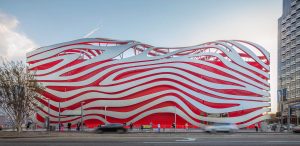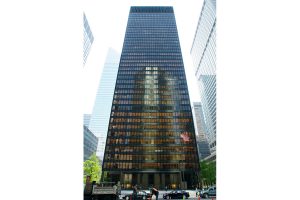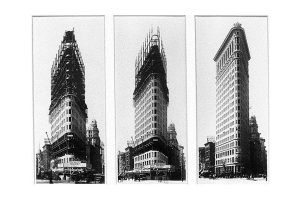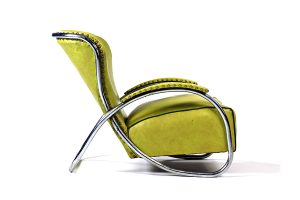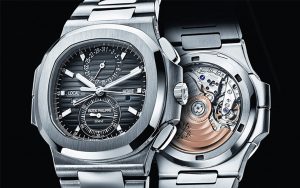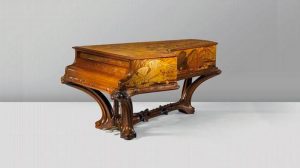The Walt Disney Concert Hall, Los Angeles, California, home of the Los Angeles Philharmonic Orchestra
Lillian Disney donates $50 million
In 1987, the former Disney pen and ink artist, the very wealthy and generous Lillian Disney, widow of the world-famous Walt Disney, donates $50 million of her fortune to begin construction of the philharmonic hall in Los Angeles. $50 million in today’s money would be around $108 million. A lot of money.
One of Lillian’s many claims to fame is the name ‘Micky Mouse’, Lilian saved the world from the rather depressing and dreary sounding, ‘Mortimer Mouse’ that her husband, Walt had suggested as his preferred name for perhaps the world’s most famous cartoon character.
Lillian and Walt were married for 41 years. Lillian died on 16th December 1997, 31 years later than her husband, aged 98 after suffering a stroke the day before.
The plan for the concert hall was to put Los Angeles at the centre of the cultural sphere on the world stage. Music, which was and is so extremely important to the Disney business, as an art form, was to be honoured very highly with its very own fairy tale castle.
To this day The Disney Concert Hall is the permanent home of the brilliant Los Angeles Philharmonic Orchestra.
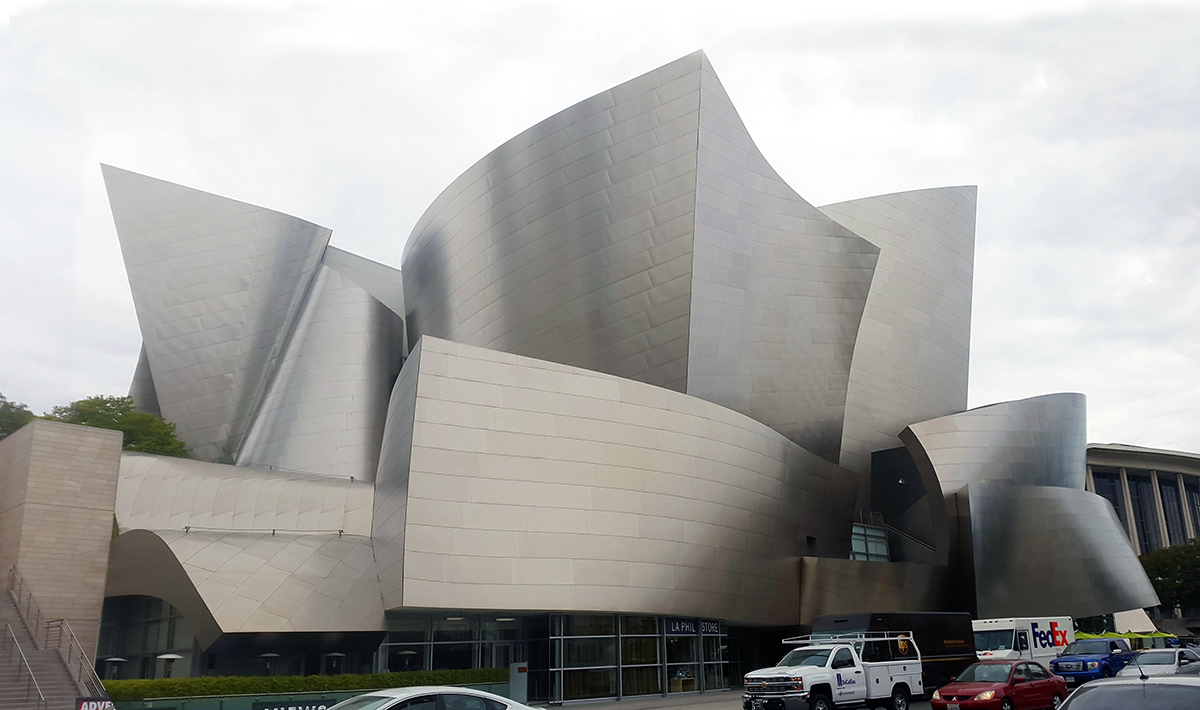
The Walt Disney Concert Hall, LA, California. The main auditorium holds 2265 concert-goers and boasts exceptional acoustics.
Photography by TIDB (The UK Interior Design Bureau) 2016.
Frank Gehry
The architect of the moment was Frank Gehry, but it was no slam-dunk for Mr Gehry. An international competition was held and more that 70 alternative designs were submitted. I have searched for these alternative designs without success.
Gehry imposed his characteristic free form, flowing, sharp edged style on the building and the design team. To me the building represents music made solid. It flows like music; it looks like sound exploding out of the sidewalk like a symphony.
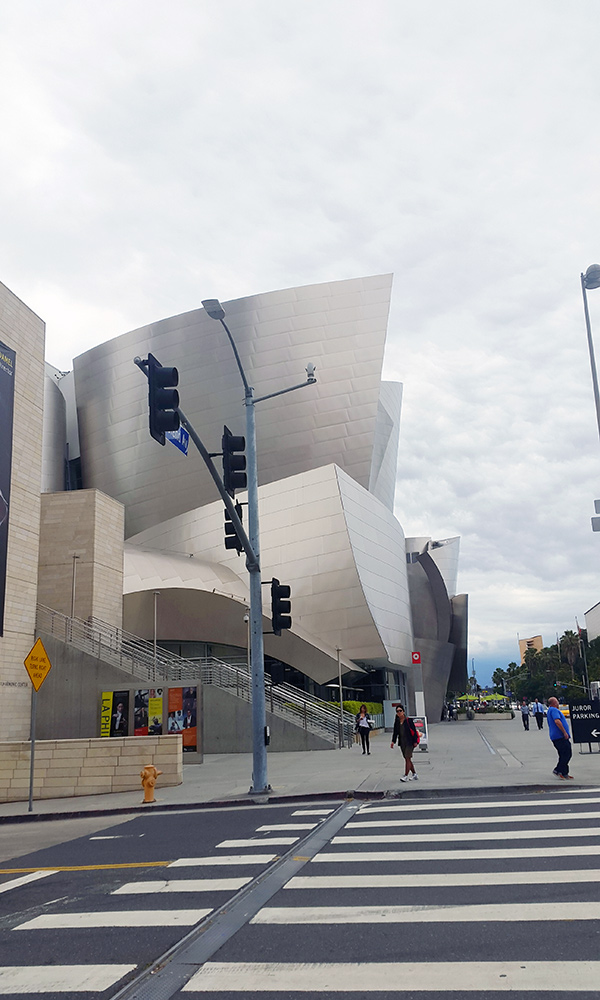
Frank Gehry’s Walt Disney Concert Hall, showing the dramatic structure in contrast to the sidewalk.
Photography by TIDB (The UK Interior Design Bureau) 2016.
This flowing style, which has made Gehry a household name (well in architect’s houses at least) can be seen in all of his buildings.
The design for the Concert Hall
The design for the Disney concert hall was done years before his signature design for the Guggenheim Museum in Bilbao. The hall was subject to over 10 years of delay and took 16 years to complete, opening on 24th October 2003. This allowed Mr Gehry to hone his design.
On first sight it looks like a set of silver sails heading towards you from Bunker hill. The sails appear to be billowing and full of wind.
The conceptual design originally called for a stone clad building. However, after receiving much critical acclaim for his ground breaking, stunning titanium-clad Guggenheim Museum in Bilbao, Gehry decided to change the stone cladding he had in mind to a 3D stainless steel panel system. Utilizing 3D stainless steel panels, which were designed to be used instead of titanium panels enabled a high gloss finish on the building, rather than the more muted tones of titanium. The stainless steel panels enabled Gehry to develop the design and hone the edges.
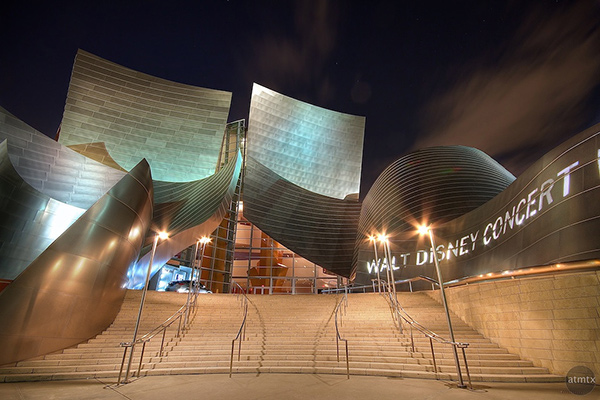
The sweeping entrance to the Walt Disney Concert Hall
Photo by www.atmtxphoto.com/Blog/Creative-commons
The stainless steel “sails”
This gloss finish has brought its own problems to the design. The surface of the stainless steel panels reflects light and thus heat onto the side walk, making the area uncomfortable for road-users and pedestrians alike. This unusual problem has been partly addressed by metalwork contractors sandblasting the worst affected areas with a fine grit.
The Disney Concert Hall is thought by many to be the first Architectural/Engineering/Construction project in the United States where 100% of all the construction drawings and dimensional controls are defined fully in a three-dimensional computer model. These architectural, structural, mechanical, and construction models consist mainly of very complex curves and complex surfaces.
These early 3D models were generated by a revolutionary computer system, utilising an early 3D modelling system called CATIA CAD/AM on a network of Unix workstations. CATIA was used to produce 3 Dimensional models for Aerospace and the Automobile industry and was very cutting-edge technology.
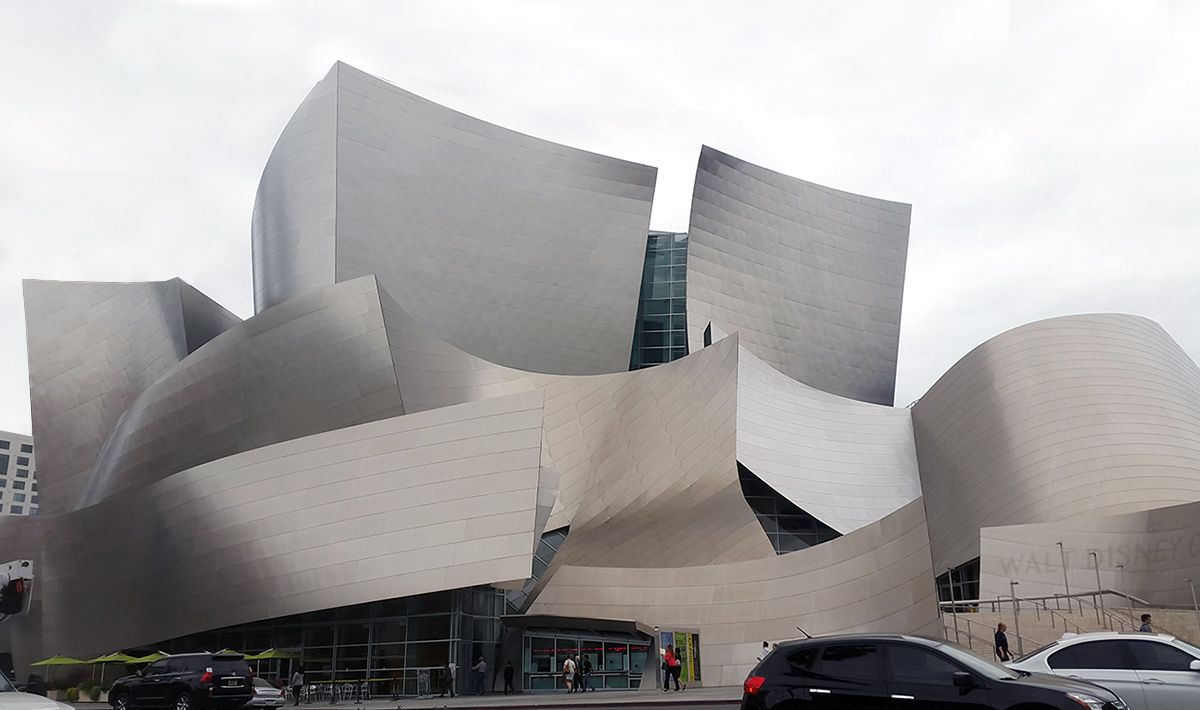
The stainless steel “sails” of the Walt Disney Concert Hall.
Photography by TIDB (The UK Interior Design Bureau) 2016.


